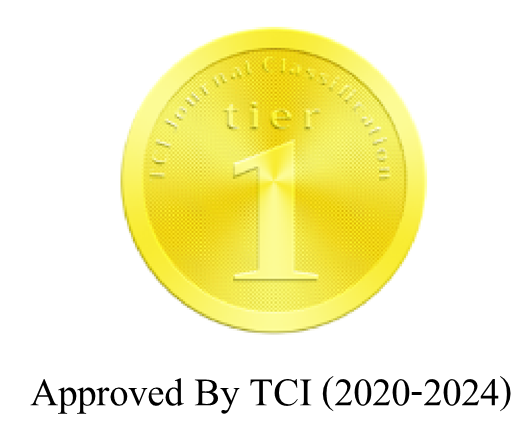International Production Networks in Hard Disk Drive Industry in Thailand
Keywords:
International Production Networking, Hard Disk Drive, Industrial Cluster, Thai Manufacturing, Multinational EnterprisesAbstract
The paper probes the nature of international production networking (IPNs) of hard disk drive using Thailand as a case study. The research methodology is based on interview evidence of samples purposively selected in order to reveal how firms make use of IPNs. The key finding is that Thailand is well integrated into the global production networks of the multinational enterprises (MNEs). Starting with assembling task for further process, the affiliates in Thailand gradually acquired more technological capability over time and reached a process engineering stage in which the affiliates are capable of developing basic and detailed designs for production processes. At this developmental stage, industrial clustering starts as there is a need for intensive cooperation between HDD makers and suppliers to create effective coordination and to achieve ‘virtual integration of the entire system’. Our findings suggest that industrial clustering does not necessarily rule out the possibility of firms to source their input internationally. In fact, they coexist, i.e. industrial clustering occurs in the first layer of
production network where HDD makers and Tier-1 suppliers work together to avoid any coordination failure. When parts are less customized, as found in the second layer, Tier-1 suppliers internationally source their intermediates and benefit from the existing dispersion of resource endowments around the globe. The key policy inference is that industrial clustering is not a synonym of complete localization. Local content would increase as a consequence of industrial clustering but how much local content would achieve depends entirely on supply-side capability.
References
2. Athukorala, P. (2006), “Product Fragmentation and Trade Patterns in East Asia’, Asian Economic Papers, 4(3), 1-27.
3. Athukorala, P. (2008a) ‘Singapore and ASEAN in the New Regional Division of Labour’, Singapore Economic Review, Singapore Economic Review, 53(3)
4. Athukorala, Prema-chandra (2008b) ‘The Rise of China and East Asian Export Performance: Is the Crowding-out Fear Warranted?’, World Economy (forthcoming)
5. Athukorala, P.C. and A. Kohpaiboon (2008) ‘Trade and Investment Patterns in Asia: Implications for the Debate on Multilateralising Regionalism’, paper presented in the conference Multilateralizing Asian Regionalism, ADBI, Tokyo, Japan (18-19 September, 2008)
6. Athukorala, P.C. and A. Kohpaiboon (2009) ‘Intra-Regional Trade in East Asia: The Decouping Fallacy, Crisis, and Policy Challenges’ Paper for presentation to the Conference on Global Financial and Economic Crisis: Impact, Lesson and Growth rebalancing, Asia Development Bank Institute, Tokyo, 22-23 April 2009
7. Berger, M. (2005) ‘Upgrading the System of Innovation in Late-Industrialising Countries – The Role of Transnational Corporations in Thailand’s Manufacturing sector’, Unpublished Dissertation, Christian-Albrechts-Universität zu Kiel.
8. Borrus, M., D. Ernst and S. Haggard (2000) International Production Networks in Asia: Rivalry or Riches?, London and New York, Routledge.
9. Brimble, P. (2007), ‘Strengthening the Hard Disk Drive Cluster in Thailand’, Policy Report submitted to NSTDA, Bangkok.
10. Carincross, F. (1997), Death of Distance: How the Communications Revolution Will Change Our Lives , Harvard Business School Press, Massachusetts.
11. Dicken, P. (2007), Global Shift: Mapping the Changing Contours of the World Economy, fifth edition. London: Sage.
12. Dobson, W and CS Yeu (1997). Multinationals and East Asian integration. Singapore: Institute of Southeast Asian Studies.
13. Finger, J. M. (1975) ‘Tariff Provisions for offshore assembly and exports of developing countries’, Economic Journal 85(338): 365-371.
14. Fliess, B.A. and P. Sauve (1997) ‘Of Chips, Floppy Disks, and Great Timing: Assessing the Information Technology Agreement’, Paper prepared for the Institut Francis des Relations Internationales (IFRI) and the Tokyo Club Foundation for Global Studies.
15. Fushita, M., Krugman, P. and Venables, A. J. (1999) The Spatial Economy – Cities, Rgions, and International Trade, The MIT Press, London, England.
16. Gereffi, G., J. Humphey and T. Sturgeon (2005) ‘The Governance of Global Value Chains’, Review of International Political Economy 12, no.1, 78-104.
17. Grossman G. M. and Helpman E. (2005) ‘Outsoursing in a Global Economic’, Review of Economics Studies 72, 135-159.
18. Helleiner, G. K. (1973) ‘Manufacturing exports from less developed countries and multinational firms’, Economic Journal 83(329): 21-47.
19. Helpman, E. (2006), 'Trade, FDI and the Organization of Firms', Journal of Economic Literature, 44(3): p. 589-630.
20. Hiratsuka, D. (2006), East Asia's De Facto Economic Integration, Palgrave Macmillan.
21. Hiratsuka, D. (2008), ‘Initiatives towards for Enhancing and Ensuring Production Networks in the Asia-Pacific Region, IDE Discussion Paper, Institute of Developing Economies, JETRO.
22. Hiratsuka, D. (2008), ‘Production Fragmentation and Networks in East Asia Characterized by Vertical Specialization’, in D. Hiratsuka and Uchida (eds.), Vertical Specialization and Economic Integration in East Asia, Chosakenkyu-Hokokusho, Institute of Developing Economies, JETRO.
23. Hughes, H. (2001). ‘The Evolution of Dual Economies in East Asia’, in D. Lal and R.H. Snape (eds.), Trade, Development and Political Economy: Essays in Honour of Anne O. Krueger, Palgrave McMillan.
24. Hummels, D. (2007). "Transportation costs and international trade in the second era of globalization." Journal of Economic Perspectives 21(3): 131-154.
25. Jones, R.W. and H. Kierzkowski (2001), 'A Framework for Fragmentation', in S.W. Arndt and H. Kierkowski (eds.), Fragmentation: New Production Patterns in the World Economy, New York, Oxford University Press.
26. Jongwanich, J. (2009) ‘Foreign Direct Investment in Developing Asia: Implications of International Production Network’, Economic and Research Department, Asian Development Bank.
27. Jongwanich, J. and A. Kohpaiboon (2007)‘Determinants of Protection in Thai Manufacturing’, Economic Papers 26(3), p. 276-294
28. Kimura, F. (2001), ‘Fragmentation, Internationalization, and Interfirm Linkages: Evidence from The Micro Data of Japanese Manufacturing Firms’, in L. K. Cheng and H. Kierzkowski, Global Production and Trade in East Asia, Kluwer Academic Publishing.
29. Kimura, F. (2009), ‘The Spatial Structure of Production/Distribution Networks and its Implication for Technology Transfers and Spillovers’, ERIA Discussion Paper (forthcoming), Economic Research Institute for ASEAN and East Asia (ERIA), Jakarta.
30. Kimura, F. and Ando M. (2005) ‘Two-dimensional Fragmentation in East Asia: Conceptual Framework and Empirics’, in Kierzkowsk H., International Review of Economics and Finance 14: 317-48.
31. Kohpaiboon, A. (2006), Multinational Enterprises and Industrial Transformation: Evidence from Thailand, Cheltenham, Edward Elgar.
32. Kohpaiboon, A. (2007), ‘‘Thai Automotive Industry: Multinational Enterprises and Global Integration’ ERTC Discussion Paper 2007/4 Faculty of Economics, Thammasat University.
33. Krugman, P. (1991) Geography of Trade, Cambridge: MIT Press.
34. Krugman, P. (1995) 'Growing World Trade: Causes and Consequences' Brookings Papers on Economic Activity, 56: p.269-293
35. Lakenan, B., D. Boyd, and E. Frey (2001), ‘Why Cisco Fell: Outsourcing and its Peril’, Strategy and Business, 24: 54-65
36. Lall, S., M. Albaladejo and J. Zhang (2004). "Mapping fragmentation: electronics and automobiles in East Asia and Latin America." Oxford Development Studies 32(3): 407-432.
37. McKendrick, D.G., R.F. Doner and S. Haggard (2000), From Silicon Valley to Singapore: Location and Competitive Advantage in the Hard Disk Drive Industry, Stanford, Cal: Stanford University Press.
38. Morawetz, D. (1981), Why the Emperor's New Clothes are not made in Colombia: A Case Study in Latin American and East Asian Manufactured Exports, Washington, DC: Oxford University Press.
39. Ng, F. and A. Yeats (2003). Major trade trends in East Asia: what are their implications for regional cooperation and growth? Policy Research Working paper 3084. Washington DC: World Bank.
40. Nishimura, K. G. (2005). "Comments on ‘Product fragmentation and trade patterns in East Asia.' Athukorala, P" Asian Economic Papers 4(3).
41. Nikomborirak, D. (2005), ‘Thailand’ in D. H. Brooks and S.J. Evenett (eds.) Competition Policy and Development in Asia, Hamsphire, U.K.: Palgrave Macmillan, p. 270-96.
42. Patton, M. Q. (1990), ‘Qualitative Evaluation and Research Methods (2nd Edition)’, Sage Publications, California.
43. Pickles, J. (2006) ‘Theme Issue on Trade Liberalization, Industrial Upgrading, and Regionalization in Global Apparel Industry’, Environment and Planning A 38, no. 12, 2201-34.
44. Rangan, S. and R.Z. Lawrence (1999), A Prism on Globalization, Brookings Institution Press, Washington DC.
45. Richardson, G. B. (1972), ‘The organization of industry’, Economic Journal, 82 (327), 883-96.
46. Ruane, F. and Görg H. (2001) ‘Globalization and Fragmentation: Evidence for the Electronics Industry in Ireland’, in S.W. Arndt and H. Kierzkowski (eds.) Fragmentation: New Production Patterns in the World Economy, Oxford, Oxford University Press.
47. Runckel,C. W. (2004) Thailand Announces New Incentives For Hard Disk Drive Industry, Business in Asia (available at http://www.business-inasia.com/harddiskdrive_industry.html)
48. Scott, A. J. (2006) ‘The Changing Global Geography of Low-Technology, Labor-Intensive Industry: Clothing, Footwear and Furniture’, World Development 34, no. 9, 1517-39.
49. Seagate Technology (Various issues) (2008), Annual Report and Form 10-K.
50. Sharpton, M. (1975). "International subcontracting." Oxford Economic Papers 27(1): 1194-135.
51. Spencer, B. (2005), 'International Outsourcing and Incomplete Contracts', Canadian Journal of Economics, 38(4): p. 1107-1135.
52. Sturgeon T. (2003) ‘What really goes on in Silicon Valley? Spatial clustering and dispersal in modular production networks’, Journal of Economic Geography 3, Oxford University Press.
53. Sturgeon, T. and R. K. Lester (2004), ‘The New Global Supply Base: New Challenges for Local Suppliers in East Asia’, in S. Yusuf, M.A. Altaf, and K. Nabeshima, Global Production Networking and Technological Change in East Asia, Oxford University Press for the World Bank, New York.
54. Warr, P.G. (2000), ‘Thailand's Post Crisis Trade Policies: The 1999 WTO Review’, World Economy, 23 (9), 1215–1236.
55. Watanabe, S. (1972). ‘International subcontracting, employment and skill promotion.’International Labour Review 105(5): 425-449.Western Digital (Various issues) (2008), Annual Report and Form 10-K.
56. Wolf, M. (2001), ‘Will the Nation-State Survive Globalization’, Foreign Affairs, 80(1), 178-190.
57. Yamashita, N. (2008) ‘International Fragmentation of Production, Trade Patterns and the Labour Market Adjustment in Japanese Manufacturing’, A thesis submitted for the degree of Doctor of Philosophy at the Australia National University.
58. Yasuf, S. and S.J. Evenett (2002), Can East Asia Compete? Innovation for Global Markets, Oxford University Press for the World Bank, New York.
59. Yeung, H. W. (2008), ‘Industrial Clusts and Production Networks in Southeast Asia’,in I.Koruiwa. and T. M. Heng, Production Networks and Industrial Clusters, Institute of Developing Economics, JETRO.
60. Yi, K.M. (2003), ‘Can Vertical Specialization Explain the Growth of World Trade?’, Journal of Political Economy, 111(1), 52-102.
61. Yusuf, S. (2004), ‘Competitiveness through Technological Advances under Global Production Networking’, in S. Yusuf, M.A. Altaf, and K. Nabeshima, Global Production Networking and Technological Change in East Asia, Oxford University Press for the World Bank, New York.
62. ศูนย์เทคโนโลยีอิเล็กทรอนิกส์และคอมพิวเตอร์แห่งชาติ (2550) รายงานฉบับสมบูรณ์โครงการศึกษาห่วงโซ่อุปทานและมูลค่าเพิ่มของอุตสาหกรรมฮาร์ดดิสก์ไดรฟ์ในประเทศไทยปี พ.ศ. 2549
63. อาชนัน เกาะไพบูลย์ (2551) ปรากฏการณ์แบ่งแยกขั้นตอนการผลิตสินค้า: แนวโน้ม รูปแบบและ นัยเชิงนโยบายต่อภาคอุตสาหกรรมไทย (รายงานความก้าวหน้าครั้งที่1) งานวิจัยเสนอต่อสำนักงานสนับสนุนงานวิจัย, กรุงเทพฯ







